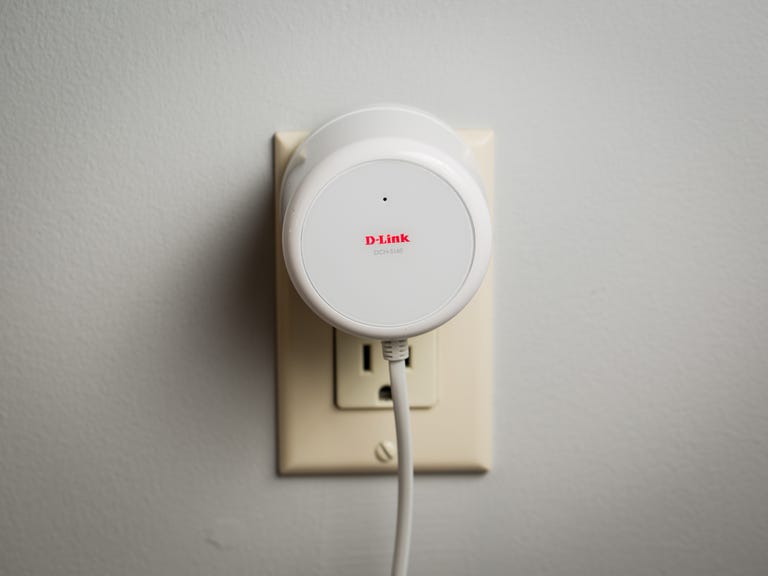 Why You Can Trust CNET
Why You Can Trust CNET D-Link Wi-Fi Water Sensor review: D-Link is the best flood sensor on the market
With a slew of great features and a clever integration solution, D-Link assures its dominance in a flooded market.
The design behind leak sensors is actually pretty cool: essentially, most sensors have two or three metal probes that, when they come in contact with water, detect increased conductivity and set off an alarm. It's an elegant solution to the age-old problem of flooding.
The Good
The Bad
The Bottom Line
But D-Link takes an even more creative approach. Rather than using probes, D-Link's Wi-Fi Water Sensor uses a cable with long, twisting leads embedded in it. You can run the cable along the edge of your basement floor, say, and if water touches it anywhere, the twisted leads detect increased conductivity and set off an alarm. It's a little like what we did when we created our own flood detector last winter.
D-Link is unique for more reasons than the cable, though. The base unit also plugs directly into a wall, negating the need for batteries, and connects via Wi-Fi to your phone -- cutting out the smart home hub middleman that limits so many other flood sensors .
The result is a solid product with a slightly higher price of $60 (compared with its $40 competitors that work with SmartThings or Wink).
D-Link's biggest strength is also a weakness, though. It doesn't need batteries, but if the power goes out at the same time as a flood, it can't do anything. Sure, battery-dependent devices won't be able to communicate with their hubs if the power is out, but they can at least sound an audible alarm. Not so with D-Link.
Here are D-Link's specs:
- Water detection
- Audible alarm and mobile alerts
- Includes a cable to extend its sensing range
- No batteries needed
- Works with IFTTT
While the D-Link doesn't have the same ability to measure temperature and humidity of more expensive units, it makes up for it by integrating with IFTTT. This allows users to creatively connect the D-Link Sensor to their smart LEDs, their phone's apps, or even a smart switch with an alarm. It's a cool approach to allow users interested in DIY problem-solving the freedom to plug the D-Link into a much larger system of integrated gadgets.
If you're looking for a connected flood sensor this season, D-Link's device is one of the best on the market.


